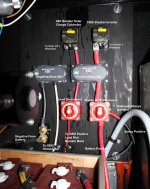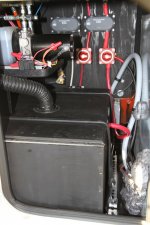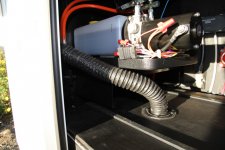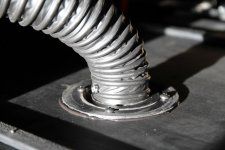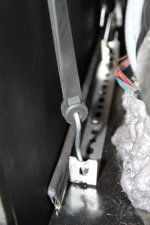watchthebox
Well-known member
Today I finally finished installing new batteries in my 2011 Cyclone 3010. The original single 12V battery from the dealer just didn't have enough juice.
My overall plan is to install new batteries, add an inverter, and add solar to my Cyclone. Here are some pictures of the progress so far:
Just getting started, original battery.
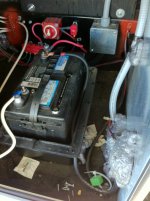
Old battery removed, braces installed ready for new battery box.
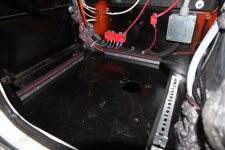
New battery box installed, note elevation of hydraulic unit with 2X4 scraps which was necessary to squeeze box into small spot.
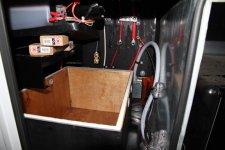
4 new Trojan T-105 Plus batteries installed and wired up. It was a bit of chore getting these heavy batteries under the hydraulic unit and into the box. My back is feeling it.

New power center with battery disconnect switches, buss bars, and circuit breakers for upcoming inverter and solar installation. I custom made the cables with 2-0 AWG and 6 AWG marine cable. My new hydraulic crimper's getting a lot of use!
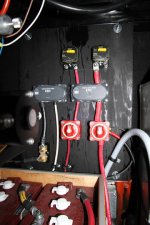
It's taken more work than I had imagined, as is often the case, in no small part due to having to work in that small compartment. Next up inverter install, then onto solar!
My overall plan is to install new batteries, add an inverter, and add solar to my Cyclone. Here are some pictures of the progress so far:
Just getting started, original battery.

Old battery removed, braces installed ready for new battery box.

New battery box installed, note elevation of hydraulic unit with 2X4 scraps which was necessary to squeeze box into small spot.

4 new Trojan T-105 Plus batteries installed and wired up. It was a bit of chore getting these heavy batteries under the hydraulic unit and into the box. My back is feeling it.

New power center with battery disconnect switches, buss bars, and circuit breakers for upcoming inverter and solar installation. I custom made the cables with 2-0 AWG and 6 AWG marine cable. My new hydraulic crimper's getting a lot of use!

It's taken more work than I had imagined, as is often the case, in no small part due to having to work in that small compartment. Next up inverter install, then onto solar!
Last edited:

